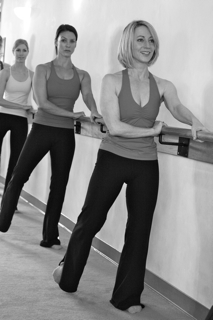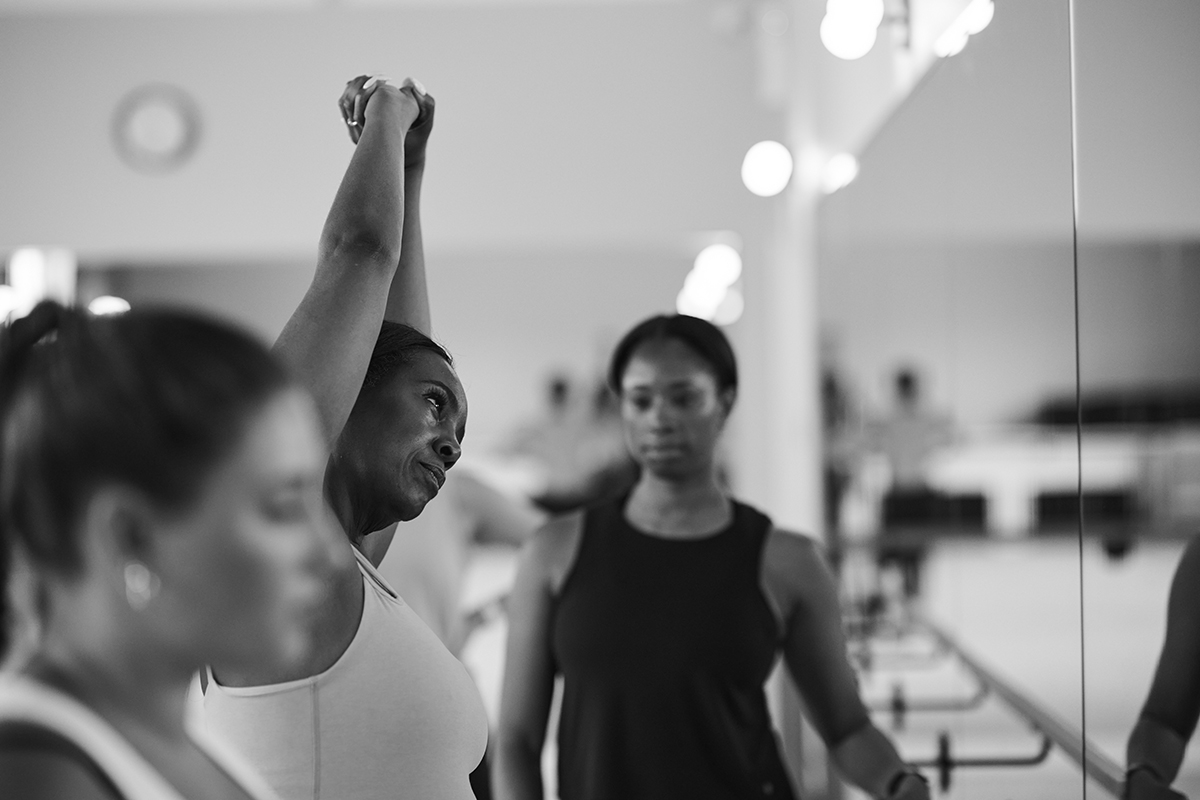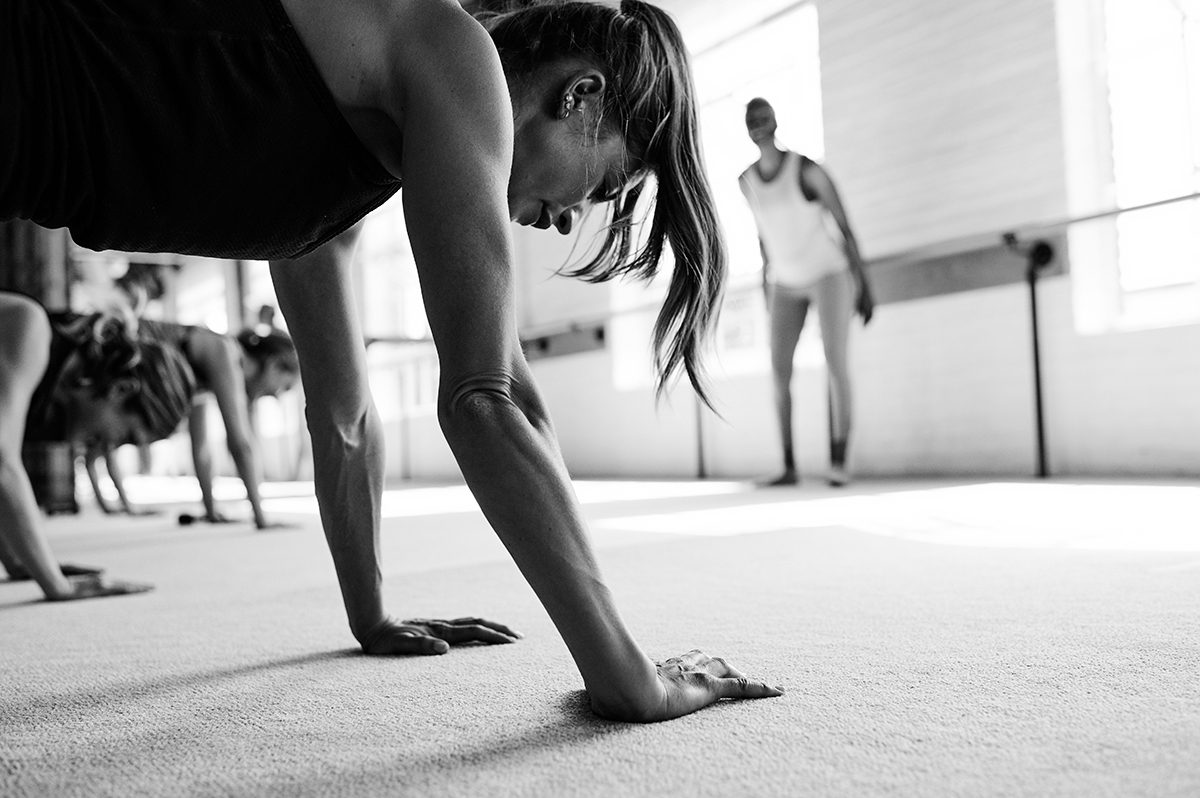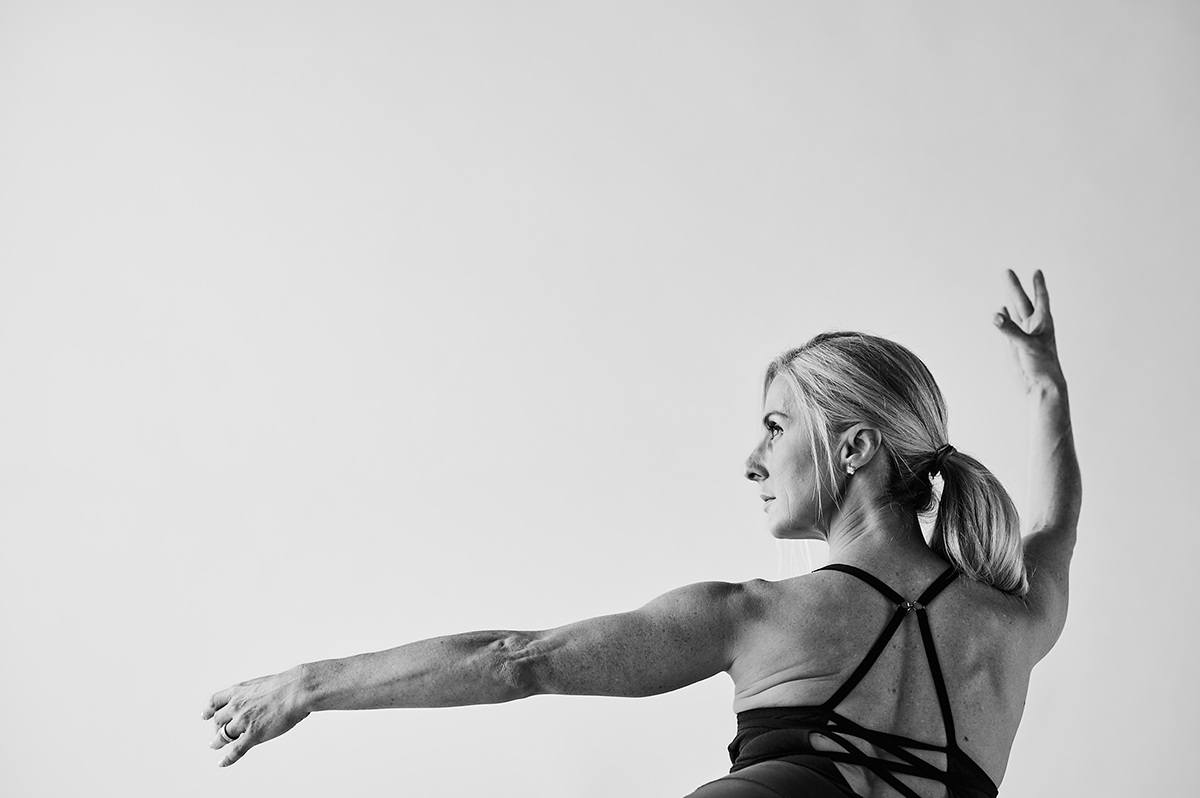New clients! For a limited time, Get 13 Classes for $78 (only $6 per class)
How to Sculpt a Dancer’s Body
There’s no doubt that a Bar Method class feels like it’s mostly intense strengthening exercises. When your muscles are on fire, they get the bulk of your attention over any stretching squeezed in between the tough parts.
Detach yourself from the burn for a moment, and look more closely at how you’re stretching your muscles during each exercise. You already know that you stretch after each strength section. These stretches fall into the category of “passive stretching” and are easy to recognize as such. You perform them, according to physiologists, when you hold a part of your body in a stretch position with the help of some other part of your body, or by using a stable support such as a bar or the floor. A split position is a passive stretch because you use gravity and the floor rather than your own power. Now look at a few sections of the workouts you thought were solely dedicated to muscle carving. You might notice that there are additional stretches embedded in many of the strength exercises. One muscle-elongating technique, which physiologists call “active stretching” actually plays a greater role in giving you a dancer-like body than the passive ones. To create an “active stretch” you enlist your own muscles on the opposite side of your body, your “agonist” muscles. The active stretches in a Bar Method class are less noticeable because they’re piggybacking on some of the most intense strength moves. Click here for more on stretching exercises.
 Consider what’s happening to your thighs and hips during seat-work. All “seat” exercises in the Bar Method require you to draw your thighs back from your hips and hold them there for up to five minutes per leg as you work your back-of-the-leg muscles.
Consider what’s happening to your thighs and hips during seat-work. All “seat” exercises in the Bar Method require you to draw your thighs back from your hips and hold them there for up to five minutes per leg as you work your back-of-the-leg muscles.
By maintaining this position the muscle contractions that you’re using to sculpt your seat are simultaneously pinning your thighs and hips back into their utmost extension — and deepening that extension with every little “pull-back” and “pulse” that you do. The double-benefit of this two-pronged-action is both tighter, higher buns and longer, narrower thighs. Click on this link to read more on Bar Method’s core strengthening exercises.
 Another example of an “active stretch” is “round-back,” which comes right after seat-work. Round-back obliges you to hold your legs at a range of motion that is the polar opposite of the way you held them during the seat section. Now you are flexing one thigh at a time inwards towards your abdominals, and now it’s your thigh that’s the “agonist” for your glutes and hamstrings, which are being held in a continual stretch by the power on the other side of your legs.
Another example of an “active stretch” is “round-back,” which comes right after seat-work. Round-back obliges you to hold your legs at a range of motion that is the polar opposite of the way you held them during the seat section. Now you are flexing one thigh at a time inwards towards your abdominals, and now it’s your thigh that’s the “agonist” for your glutes and hamstrings, which are being held in a continual stretch by the power on the other side of your legs.
Add up all the moments during a Bar Method that elongate your muscles with either active or passive of stretching, and you come up with 35 minutes of exercises that include stretches. That’s more than half the workout. So what’s happening during the other 25 minutes? You’re targeting your arms, abs and other areas where you want extra definition.
The result of this blend of strength-work and stretches is a body that features the legs of a dancer plus the carved arms and abs of an athlete, a unique look that is both graceful and sculpted. To read more about how Bar Method carves and elongates muscles, read THREE BODY SCULPTING SECRETS USED BY BAR METHOD.
Find Bar Method Exercise Classes near you.
Order the Bar Method Exercise Dvds.



